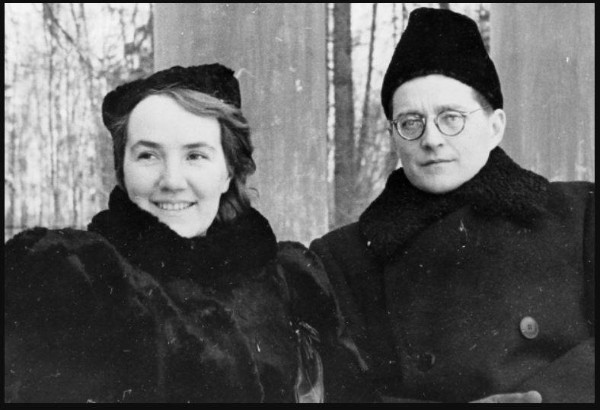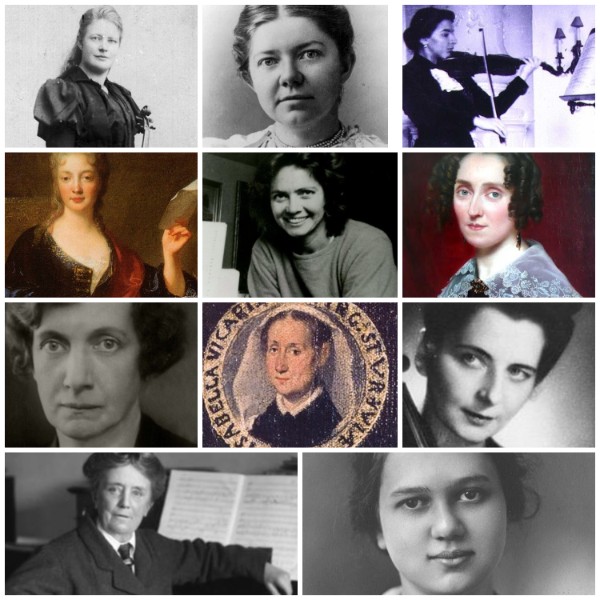Édouard Lalo (1823- 1892), a Frenchman with Spanish ancestry, is primarily celebrated for his Symphonie Espagnole, Op. 21. It is a radiant masterpiece that fuses French finesse with the intoxicating rhythms of the habanera and the seguidilla. It was brought to life by the dazzling Pablo de Sarasate in 1875, and this five-movement gem for violin and orchestra remains a highly popular work in the standard repertoire.
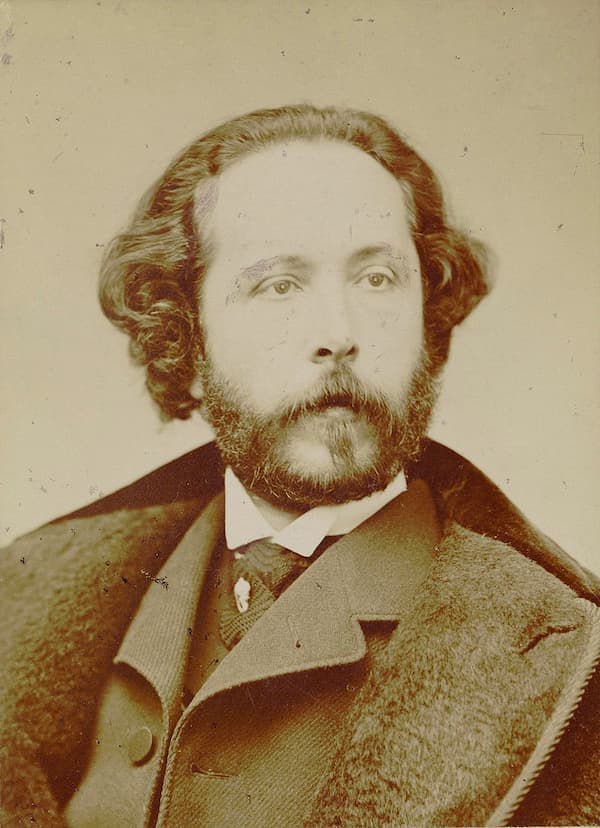
Édouard Lalo
However, the radiant Symphonie Espagnole is not his only contribution to the violin concerto repertoire. We also find a dedicated Violin Concerto dating from 1873, and the Concerto Russe composed in 1883. An additional mini-concerto, the Fantaisie Norvégienne emerged in 1878. Together, these pieces reveal a composer blending the intimate and the theatrical in a rich and varied engagement with the instrument.
Édouard Lalo died on 22 April 1892 in Paris. His health had been declining, and his death was attributed to age-related illnesses. His death marked the end of a career that significantly influenced French music, and to commemorate his passing, let us explore his violin concertos.
Édouard Lalo: Symphonie Espagnole
Symphonie Espagnole
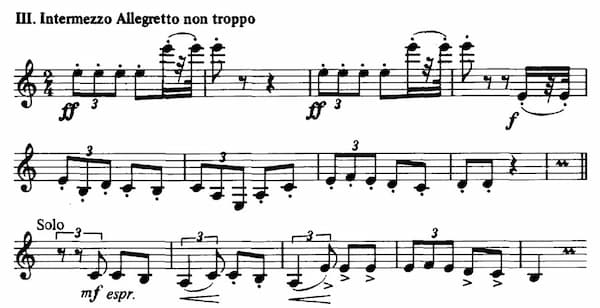
Édouard Lalo’s Symphonie Espagnole – Intermezzo
Édouard Lalo seemingly composed his Symphonie Espagnole as an expression of his own national heritage. Although born in Lille, a sprawling metropolitan area in the north of France, Lalo’s ancestry actually can be traced back to Spanish roots. Specifically, the father’s side of the family appears to have migrated from Spain in the 16th century.
In his composition, however, Lalo was simply trying to take advantage of the general artistic fascination with the Iberian Peninsula, in part stimulated by the marriage of Napoleon III to Eugenie de Montijo in 1853. After all, some of the best Spanish music of the late 19th-Century, just think of George Bizet, Claude Debussy, and Maurice Ravel, was actually written in France.
The work was specifically written for the Spanish violin virtuoso Pablo de Sarasate. Renowned for his purity of tone and impressive technical facility, Sarasate’s playing style was uniquely suited for the flowing melodies and virtuoso passages crafted by Lalo, while his Spanish nationality provided an air of assumed artistic authority.
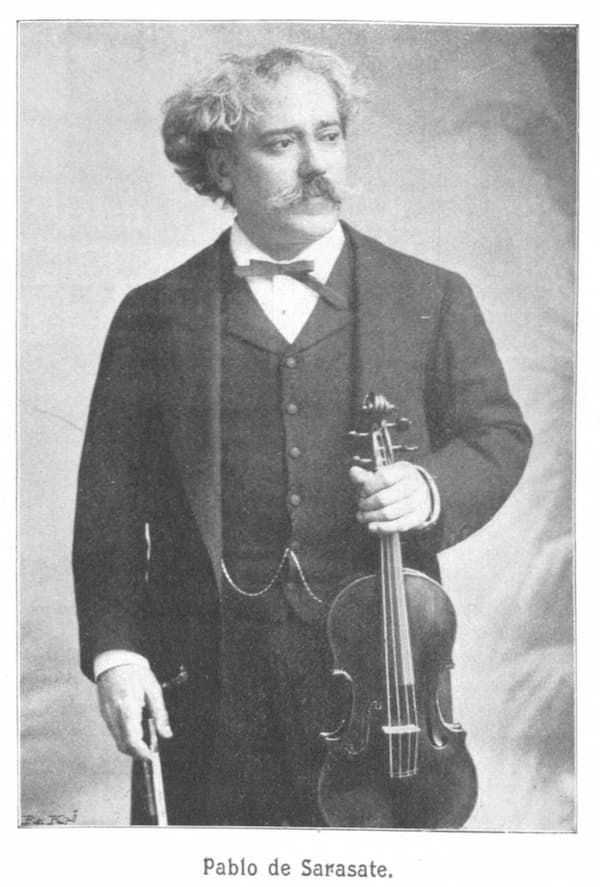
Pablo de Sarasate, 1906
Somewhat curious, this barely disguised violin concerto in the form of a “Suite” carries the title “Symphonie.” In 1879, having to explain this contradiction, Lalo suggested that he had merely intended for “the violin solo to soar above the rigid form of an old symphony.” Originally cast in four movements, Lalo subsequently added a central “Intermezzo,” and this vibrant work for violin and orchestra blends Spanish dance rhythms with virtuosic flair.
From its bold opening flourishes to its tender, lyrical interludes, the Symphonie Espagnole remains an enduring testament to Lalo’s poetic and cultural imagination.
Violin Concerto No. 1
Édouard Lalo: Violin Concerto No. 1 in F Major, Op. 20 (Olivier Charlier, violin; BBC Philharmonic Orchestra; Yan Pascal Tortelier, cond.)
When Lalo was asked to describe himself as a composer, he replied, “Although I don’t know what I am, I am well aware of what I am not; I do not belong to any school; I don’t want to become part of any system; I am of the same opinion as Musset: My glass is not big, but it is mine to drink from.”
Although he was strongly attracted to writing operas, Lalo was happiest in the unfashionable media of orchestral works and chamber music. Apparently, he explained that “when I write a work without any text, I am surrounded by the world of pure sound, and this vast domain contains its own poetry and drama; no need for any words.”
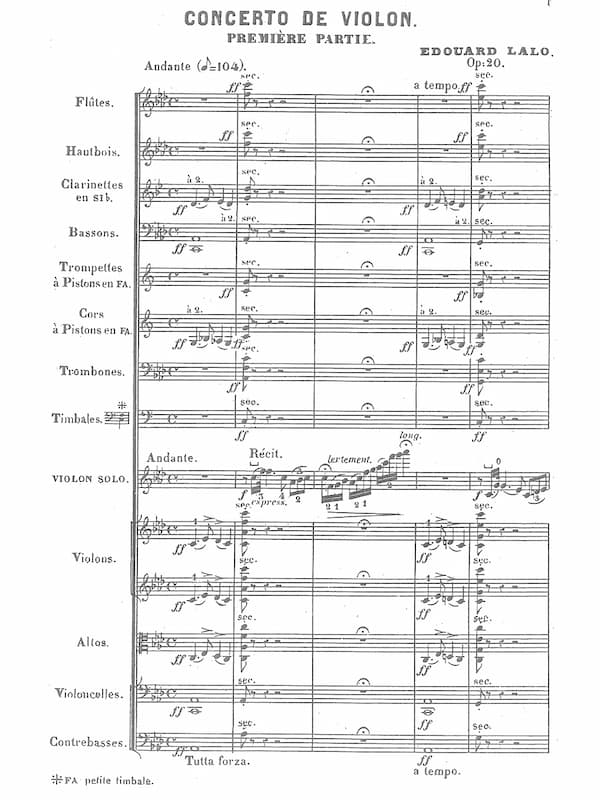
Édouard Lalo’s Violin Concerto Op. 20
Lalo met Pablo de Sarasate in 1873 and immediately began work on his Violin Concerto in F Major, Op. 20. It is a brilliant work, rich in technical invention and in the seductive melodies which Lalo made his own. Tailored for Sarasate, the concerto demands technical prowess while ensuring musical substance over mere showmanship. The concerto does incorporate Spanish-inspired rhythms and modal colours, and the balance between the soloist and orchestra is highly effective. The orchestra isn’t just accompaniment but introduces themes, engages in dialogue, and adds specific colours. Although less distinctive as compared to the Symphonie Espagnole, this concerto remains accessible. With memorable melodies and a flashy yet tasteful virtuosity, it remains appealing to audiences and performers.
As for Sarasate, he became Lalo’s closest friend, and according to scholars, “the single most important influence on his mature career.” As Lalo wrote, “I would have just gone on writing insignificant bits and pieces… I was asleep and you woke me… you have been my fresh air.”
Concerto Russe
Édouard Lalo: Concerto Russe, Op. 29 (Jean-Jacques Kantorow, violin; Tapiola Sinfonietta; Kees Bakels, cond.)
Empowered by the success of his Symphonie Espagnole, Lalo completed his Concerto Russe in the summer of 1879. While the former was the first important French work to draw upon Spanish music, the latter was its counterpart with regard to Russian music. As a musicologist pointed out, “Spanish and Russian folk music was considered an antidote to Wagnerian influence, and they contributed to the renewal of the French musical language of the time.”
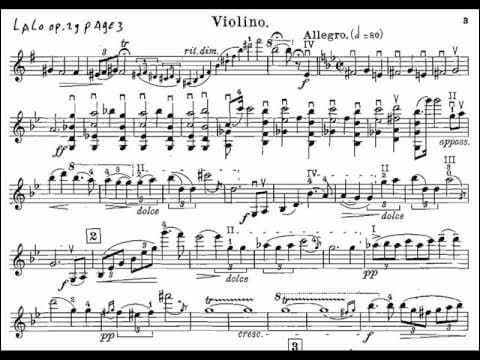
Édouard Lalo’s Concerto Russe
The work was originally to have been called “Suite,” but Lalo adopted the commercially more viable title “Concerto.” For his second and fourth movements, Lalo uses authentic Russian melodies. Specifically, Lalo incorporated two wedding songs from a collection assembled by Nikolai Rimsky-Korsakov.
For unknown reasons, Sarasate refused to play the composition and the work premiered in 1880 with Martin Marsick on 24 October 1880. Lalo wrote to Sarasate on 1 November 1880, “You know that I, unlike many of our friends, do not profess an arrogant admiration for every note I have written, and you may believe me when I assure you that the Concerto Russe is not unworthy of its predecessors…Your refusal to play the concerto has worried me terribly; I was afraid of having produced a bad or uninteresting work, and I gave a huge sigh of relief after the rehearsal. Nobody is infallible, and this time you are wrong.”
A typically Romantic, expressive and virtuosic work, the Concerto Russe unfolds like a series of vivid scenes. The opening Prélude blends solemn brass fanfares with fiery violin scales, while the “Chants Russes” utter weeping melodies for distant steppes. A playful “Intermezzo” prepares for the rondo Finale “capturing a French composer’s love affair with an imagined Russia.”
Fantaisie Norvégienne
Technically a concert piece unfolding in three loosely connected sections, Lalo’s Fantaisie Norvégienne for violin and orchestra was composed in 1878. Specifically written for Pablo de Sarasate, and borrowing a theme from Grieg, this work reflects the composer’s fascination with nationalistic colours. With his concertos drawing on Spanish and Russian musical idioms, the Fantaisie Norvégienne turns towards Scandinavian culture and landscapes.
It is a captivating work that weaves together the imagined rustic charm of Norwegian folk music with the dazzling virtuosity of a Romantic violin showpiece. Drawing on modal scales, drone-like accompaniments, and lively dance rhythms, Lalo evokes the spirit of Norway through melodies that recall the Hardanger fiddle, though reimagined for the concert stage.
The solo part dazzles with rapid scales, double stops, harmonics, and soaring arpeggios, all demanding technical brilliance, while lyrical passages call for a warm, singing tone. Fluidly moving between soulful reflection and exuberant display, the Fantaisie balances simplicity and flair, and a colourful orchestration creates a vivid musical postcard.
Sarasate premièred the Fantaisie Norvégienne in Berlin on 1 December 1878 under the baton of the German composer Max Bruch. Once again, it was a great success, and one critic wrote: “This work, so ingeniously orchestrated, so strange in its rhythms, so unexpected in its joyful harmonies, brings great credit to its composer.”
Universal Appeal
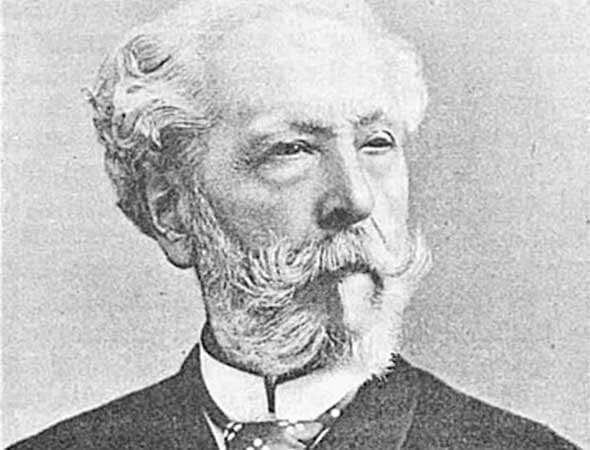
Édouard Lalo
In addition to the featured “Concertos,” Édouard Lalo composed a number of smaller works for violin and orchestra, which we might feature at a later time. At the heart of these works are vibrant melodies full of passion and elegance and infused with folk-inspired charm. Blending musical innovation, emotional depth, and cultural significance, Lalo weds French refinement and Spanish ancestry with universal appeal.
For more of the best in classical music, sign up for our E-Newsletter
Édouard Lalo: Fantaisie Norvégienne (Ruggiero Ricci, violin; Luxembourg Radio Orchestra; Louis de Froment, cond.)

